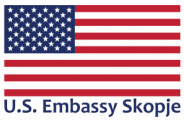Instead of owning up to the chaos they created, President Xi Jinping decided that it would be a good idea to blame others for the coronavirus, placing the illusion of government control and stability ahead of the preservation of human life.
As a student, after the exam I would sit in the University cafeteria, my friends and I would order coffee and we would get excited about the mini paper that would come with the coffee. On top of every saucer we would get a scrolled paper containing a proverb, sometimes it would be an Arabic proverb, sometimes it would be a Greek proverb, but mostly it would be a Chinese proverb (who knows, maybe they were made in china?). Now, thinking about how famous the Chinese are for their eternal wisdom I decided to share one with the readers.
“If small holes aren’t fixed, then big holes will bring hardship.” – Chinese proverb.
This proverb tells us that if a trivial problem is not solved in time, it will become a serious and knotty one. Similar to: “A stitch in time saves nine.” The problem here is that, Chinese officials are not following their own words. The small hole that they didn’t fix on time, was not listening to doctors like ophthalmologist Li Wenliang who warned the government about COVID – 19. The big holes that brought hardship is a pandemic and thousands of peoples losing their lives each day.
Instead of owning up to the chaos they created, President Xi Jinping decided that it would be a good idea to blame others for the coronavirus, placing the illusion of government control and stability ahead of the preservation of human life. The seemingly coordinated effort to, at minimum, sow doubts about the virus’s origin, and, at its most extreme, to directly accuse the U.S. military of creating and spreading the pathogen, has come from Chinese medical leaders, ambassadors and Foreign Ministry spokespersons — not to mention the hundreds of thousands of comments on Chinese social media echoing the conspiracy theories[1].
The first signs of Chinese skepticism of the virus’s origin came from the face of its fight against the epidemic, the celebrated doctor Zhong Nanshan, who was instrumental in the 2003 handling of the SARS crisis and has been featured in numerous televised interviews during the COVID-19 outbreak. At a press conference on Feb. 27, Zhong stated that the virus “may not have originated in China.”
Soon after, numerous Chinese politicians began what appeared to be a coordinated campaign to spread that idea, with several tweeting or uttering nearly identical statements questioning the origin of the virus.
On March 8, the Chinese ambassador to South Africa tweeted that, “Although the epidemic first broke out in China, it did not necessarily mean that the virus is originated from China, let alone ‘made in China.’”
Days later, in a series of posts on Twitter by Zhao Lijian, the Foreign Ministry spokesman who has made good use of the platform, which is blocked in China, to push a newly aggressive, and hawkish, diplomatic strategy. It is most likely intended to deflect attention from China’s own missteps in the early weeks of the epidemic by sowing confusion or, at least, uncertainty at home and abroad[2]. U.S. Department of Defense press secretary Alyssa Farah replied to Zhao’s tweet by saying, “As a global crisis, COVID-19 [should] be an area of cooperation between nations. Instead, the Communist Party of China has chosen to promulgate false & absurd conspiracy theories about the origin of COVID-19 blaming U.S. service members. #ChinaPropaganda.”
The State Department then summoned China’s ambassador in Washington in protest of the rumor. The assistant secretary of state for the Bureau of East Asian and Pacific Affairs, David Stilwell, expressed “stern representation” of the American position to Ambassador Cui Tiankai, who was “very defensive,” the State Department later said.
But conspiracy theories about the emergence of the virus aren’t limited to Chinese officials.
Last month, U.S. Sen. Tom Cotton stated on Fox News that, because Wuhan is home to one of China’s leading high-level biosafety laboratories, “we have to get to the bottom of” whether the virus emerged from that facility. (The Arkansas Republican later qualified his comments, saying the bioweapon theory is just one among several possible explanations).
Trump has been less critical of the rumors. On the same day his State Department and Pentagon officials were responding forcefully against the Chinese comments, he praised Beijing’s sharing of information with the U.S. and said the rumors did not comport with his conversations with President Xi Jinping. However, he later told a press conference at the White House, “They [the Chinese] know where it came from. We all know where it came from.”
China will temporarily close its border to most foreign travelers, effective at 12:01 a.m. on Saturday – 28 March, to prevent a new outbreak of the coronavirus in the country. The restriction applies to foreigners holding visas or resident permits, as well as to those holding APEC Business Travel Cards. China is keen to convince the world that things are getting back to normal within its borders. But the message that all is well is undercut by the tightening lockdown in Beijing, where streets remain empty and many offices and factories are required to have no more than 30 percent of their employees physically at work at any given time. For Chinese officials, protecting the party leadership from infection is clearly the highest priority. Deaths in Beijing appear to matter more than deaths elsewhere, so the response there is a telling vision of what the government really believes about the virus[3].
Some pointed out that China’s National Health Commission had put asymptomatic cases and confirmed cases into two separate categories in the third edition of its “COVID-19 Control Guidelines” published at the end of January. In fact, the working definition of “confirmed infection” used by Chinese health authorities has changed a number of times since January[4].
How many asymptomatic cases are there? China’s official figures leave a major unanswered question: How many asymptomatic cases of the virus are there, and is the country recording them properly? Asymptomatic patients are not included in the tally of cases, and the Chinese government claims that they are only 1.5 percent of total infections. But figures from Japan and South Korea suggest the real figure may be closer to between 10 and 20 percent, and data obtained by the media outlet Caixin suggests that Chinese provinces are fixing the real figures.
After the health authorities subtracted the asymptomatic cases from the official figure, the number of confirmed cases peaked at about 4,000 on February 4, and slowly declined to about 2,000 February 11. Then there was a 600 per cent surge as 15,152 confirmed cases emerged February 12 following major leadership changes in Hubei province and the city of Wuhan. Under the new leadership, the definition of “confirmed” was changed from being based on laboratory testing to clinical diagnoses. In reality, there were only 1,820 confirmed laboratory cases, while the remaining 13,332 of the new cases were clinically confirmed. After February 12, the curve of confirmed cases declined as the definition of “confirmed” infection was shifted back to laboratory testing. Hubei, the central Chinese province where the pandemic emerged at the end of 2019, reported 51 asymptomatic cases on April 2 — the majority of the national total for that day[5].
The reality is that President Xi Jinping acted too late, and yet, the Chinese government has decided to reshape the narrative by declaring early victory in the battle against the pandemic.
The economic outlook in China remains dire. The services sector may be hit just as hard as manufacturing, with new data showing an all-time low in consumer confidence. The figures look very bad, especially considering that long delay times caused by inactivity are still factored into the index as a sign of positive growth—usually, delays are the result of busy factories. There is little sign of recovery yet, and migrant workers are still stranded and unlikely to return to work anytime soon. The government pressure to show that business activity is resuming has produced surreal scenes, with some local officials ordering factories to turn on machines to make it look like production is taking place and reporting fictitious data to top officials. Such distortion is a part of the Chinese system that the central government is well aware of but finds hard to fight. What’s critical: Similar distortions are likely taking place with the coronavirus epidemic data itself.
Even if business might be bad for China, one thing is certain – the propaganda factory is working overtime. So, let’s end this article with a Chinese proverb:
“One beam, no matter how big, cannot support an entire house on its own.”
Meral Musli Tajroska – Psychologist, Consultant on violent extremism and radicalization, activist for gender equality.
Image Credit: https://pixabay.com/photos/graffiti-pattern-san-diego-1282291/
[1] https://www.marketwatch.com/story/inside-chinas-campaign-to-blame-the-us-for-the-coronavirus-pandemic-2020-03-15
[2] https://www.nytimes.com/2020/03/13/world/asia/coronavirus-china-conspiracy-theory.html
[3] https://foreignpolicy.com/2020/03/04/beijing-china-government-believe-coronavirus-outbreak-lockdown-conspiracy/
[4] https://globalvoices.org/2020/03/23/classified-data-shows-that-chinas-official-figure-of-zero-domestic-covid-19-cases-excludes-asymptomatic-carriers/
[5] https://www.bloomberg.com/news/articles/2020-04-02/fresh-coronavirus-testing-in-china-finds-more-symptomless-cases


